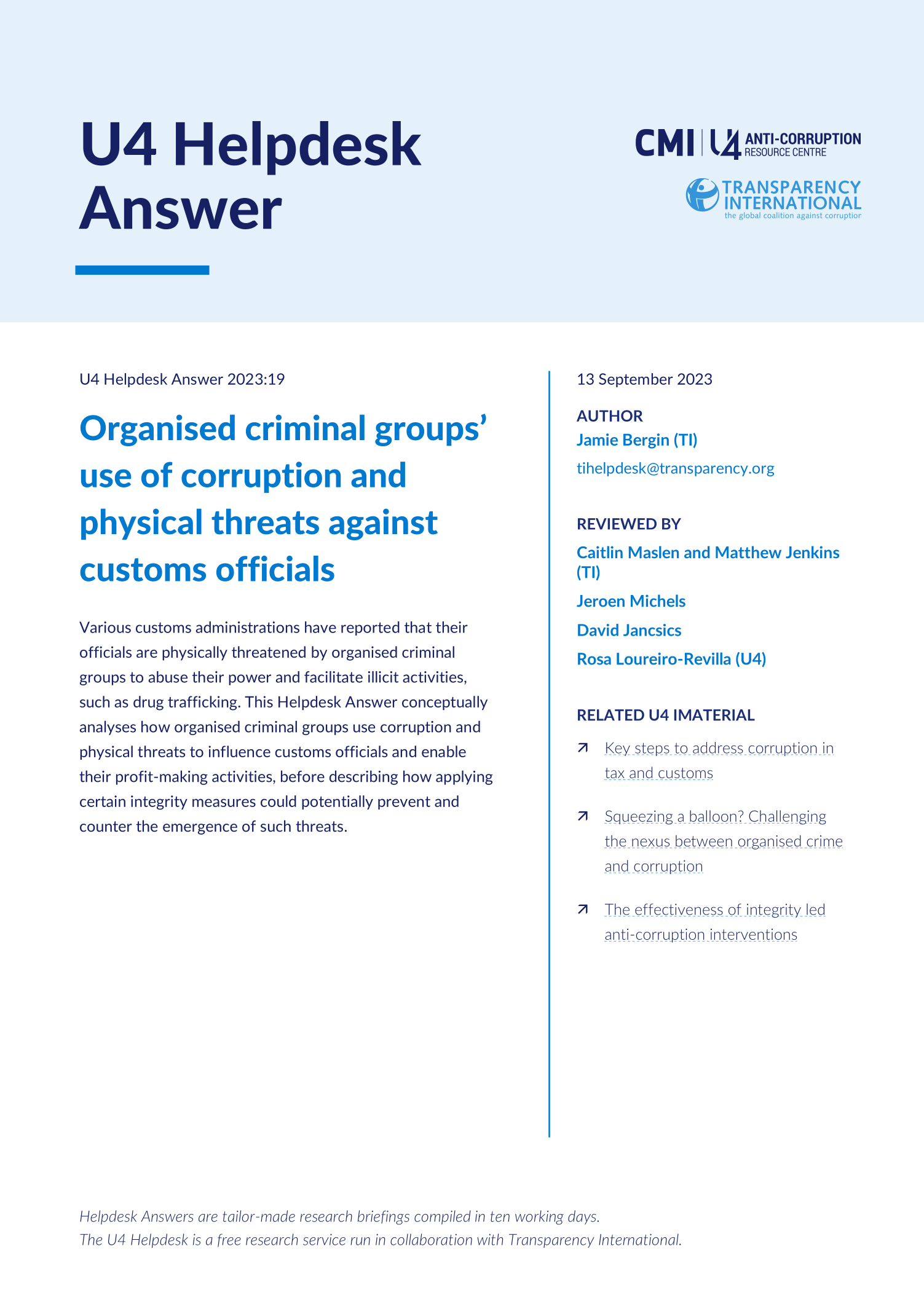Main points
- There is general agreement within the literature that organised criminal groups use corruption and physical threat as tactics to enable their profit-making activities, but less agreement on what makes them select one tactic over the other given the influence of many contextual variables.
- Both of these tactics are used against customs officials to facilitate their profit-making activities. While their use of physical threat has been comparatively less studied, it presents serious risks to the integrity of customs administrations.
- Customs administrations are best placed to take internally orientated measures to prevent and respond to the infiltration of organised criminal groups and the emergence of physical threats.
- Enhanced integrity measures have the potential to make a positive contribution in this regard. These measures include safe and secure whistleblowing mechanisms, lifestyle checks, staff rotation policies and integrity training of officials.
